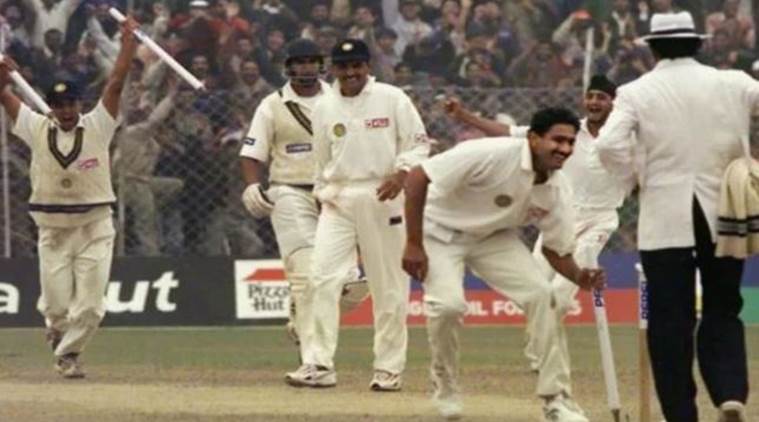Anil Kumble, India vs Pakistan, 1999, Feroz Shah Kotla cricket ground – join the dots and you get a feat that hasn’t been repeated in international cricket since then and was only the second instance in cricket’s history. Anil Kumble ran through the Pakistan batting-line-up to pick all 10 wickets in the 2nd innings of the India vs Pakistan 2nd Test match at Feroz Shah Kotla, New Delhi to seal a famous win and create history. He became the first and only India bowler till date to take all 10 wickets and only the second in the world after England’s Jim Laker who had achieved the feat in 1956 against Australia. Recalling Kumble’s historic achievement, Pakistan’s captain at that match, Wasim Akram said there was never a plan to deny Kumble the record when the leg-spinner had taken 9 wickets.
Chasing an improbably 420 to take a 2-0 lead in the series, Pakistan were comfortable place at 101 for no loss with openers Shahid Afridi and Saeed Anwar going all guns blazing before Kumble started to work his magic.
The leg-spinner first dismissed Afridi for 41 and removed Ijaz Ahmed for a golden duck to bring India back in the game. When Kumble got the prized scalp of Inzamam-ul-Haq a few overs later, the floodgates opened as Kumble rolled over the Pakistan batting line-up.
“No. This would have been against the sportsman’s spirit (desperately getting out to another bowler). I said to Waqar Younis that you play normal cricket, I will not get out to Anil Kumble. As a captain, I told Waqar to play his normal game and go for shots against (Javagal) Srinath. The first ball Kumble bowled… inside edge… and I got caught. It was a big day for India and Kumble. It was massive,” Akram told Aakash Chopra in a Youtube video.
Pakistan were bowed out for 207 as Kumble ended Akram’s resilient knock of 37 off 66 balls. India won the match by 212 runs to level the series as Kumble scripted history with figures of 10 for 74 in 26.3 overs.







